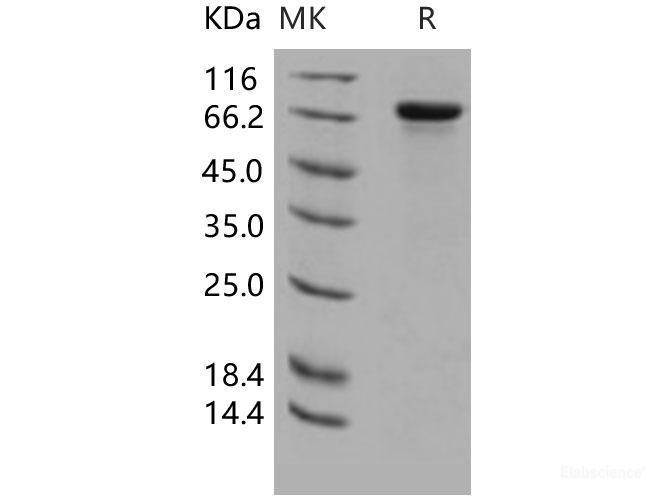Background
Histidine-rich glycoprotein, also known as HRG and HPRG, is a glycoprotein located in plasma and platelets, and contains an unusually large amount of histidine and proline. In human, five distinct domains are recognized in the mature HPRG molecule. There are two N-terminal cystatin-like modules (aa 19 - 254) and one His-Pro-rich region (aa 350 - 497) that is flanked by two Pro-rich segments (aa 276 - 321 and 498 - 525). The His-Pro-rich region contains 10 tandem repeats with an HHPHG motif, and the N- and C-termini are linked by a disulfide bond. The specific functions of HRG remain unclear, but it is known that the protein binds heme, dyes and divalent metal ions. It inhibits rosette formation and interacts with heparin, thrombospondin and plasminogen. Two of the protein's effects, the inhibition of fibrinolysis and the reduction of inhibition of coagulation, indicate a potential prothrombotic effect. HPRG is evolutionarily, functionally and structurally related to cleaved high molecular weight kininogen (HKa), an anti-angiogenic polypeptide that stimulates apoptosis of proliferating endothelial cells through binding to cell-surface tropomyosin. The antiangiogenic activity of the multidomain plasma protein HPRG is localized to its histidine-proline-rich (H/P) domain and has recently been shown to be mediated, at least partially, through binding to cell-surface tropomyosin in fibroblast growth factor-2-activated endothelial cells.







